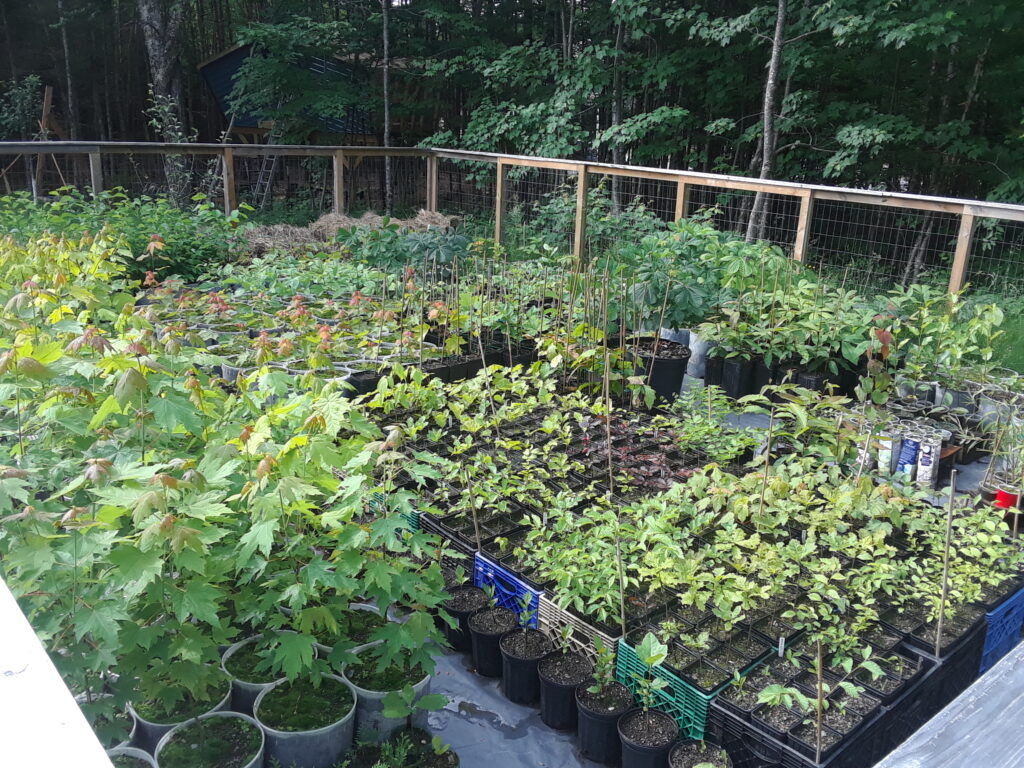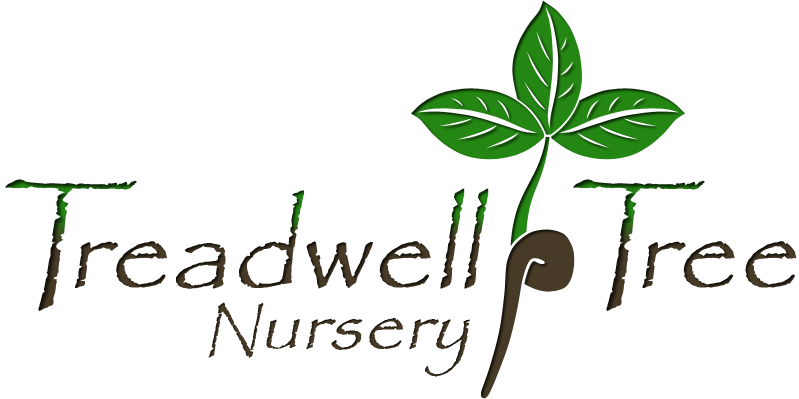Trees have fascinated me since I was a child – the thought that a tiny seed that you can hold in the palm of your hand can develop into a giant plant millions of times heavier. I asked a lot of people how this enormous mass is acquired over time and why there is not a large depression in the earth where the tree grows. Not everyone knows the answer. If you don’t know, I’ll let you figure this one out, but the answer is fun to try comprehending and explains the importance of planting trees as we face climate change.

The journey from tree admirer to tree propagator began back in spring of 2014. It was the first mowing of the season and I noticed dozens of seedlings growing up through the grass. It quickly dawned on me that they were tiny trees; the offspring of the Crimson King Maple tree in my neighbour’s yard. Some had green leaves and some had crimson leaves like the parent. I quickly dug up several and planted them in a growing bed for study. Interestingly, the successive leaves were all green, and I had to know why.

And so it began; digging up other seedlings, collecting seeds to try and germinate and learning about the science behind propagation through conversations, research and experimentation. In time, my focus fell solely on germinating seeds. Bearing witness to the miraculous biological process as it unfolds before your eyes, after millions of years of evolution is humbling. The tiny seed bursting into life, sending down its first delicate root and flushing out its very first leaves, millions of which will potentially follow. The thought that this tiny tree may one day provide food and shelter for innumerable organisms.

What at first seemed like a simple hobby to execute – plant a seed, wait for it to germinate, water it well – could not have been further from the truth. The subject is so complex, especially when growing such a wide variety of species where each has its own demands. This includes seed handling and storage, seed stratification, soil composition, potting and transplanting techniques, pest control (without pesticides), winterization, disease and fungus awareness and much more. Needless to say, I am still learning something new everyday.

